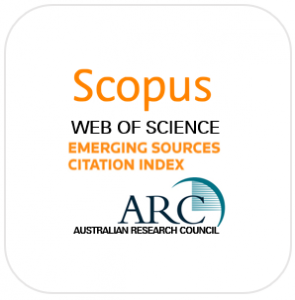Vol. 11, No. 2 (2015), 17–39
Abstract
Social capital makes it easier to access resources and to create well-being in older people through a sense of connectedness. This study aims to explore the dimensions of social capital that are most prevalent and to identify the relationships that exist between demographic characteristics and social capital among elderly Iranian people. In this cross-sectional study, over a six-month period, data were gathered from 320 elderly people aged 60 years old or older. The participants answered a questionnaire containing two sections, which included items that measured variables relevant to demographic status and social capital (consisting of 32 questions in eight dimensions). The data were analysed using SPSS software, version 19. The findings showed that the participants consisted of 193 men and 127 women with a mean age of 67.03 ± 5.51 years old. The question with the uppermost mean of social capital was “How many people did you talk to yesterday?” (M = 2.96). The highest degree of response of social capital reported by the participants was for pro-activity in a social context (70.9 percent), followed by feelings of trust (67.8 percent). Only 10.9 percent provided responses regarding participation in community components. There were strong correlations between almost all of the demographic variables and social capital dimensions, particularly education and income. Age was rather consistently negatively correlated with social capital measures; education, in contrast, was a strong contributor to social capital. The results showed that social capital dimensions were predicted by most of the demographic variables (P < 0.05). They also showed that, like other kinds of capital (physical and human capital), there was an uneven distribution of social capital among older adults in terms of sociodemographic characteristics. However, it was difficult to separate the causal processes involved; therefore, more studies of the causal effects of sociodemographic characteristics on social capital accumulation are recommended.
Author’s bio
Shima Sum is a PhD holder in Gerontology. She is an assistant professor in the department of Social Sciences of Babol University of Medical Sciences. Trained as a gerontologist, Dr. Sum’s research focuses on the health and health care of the elderly, particularly social gerontology.
Mohsen Pourghasem is a PhD holder in Anatomical Sciences. He is an associate professor in the department of Anatomical Sciences and Genetic of Babol University of Medical Sciences. Dr. Pourghasem has two post-doctoral certificates from Manchester University in England and Sydney University in Australia in Neuroscience field. His research focuses on stem cell and biological ageing.
Saman Khaleghi is a general practitioner in Medicine. He is graduated from Babol University of Medical Sciences. His research focuses on social ageing.
[tab: Download article]

